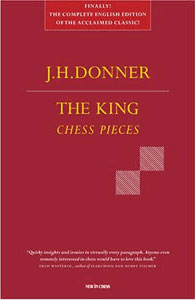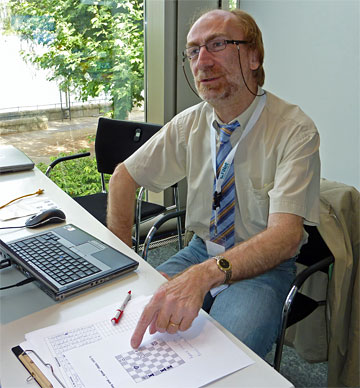


Let us start with two warm-up puzzles for humans. What could be easier than finding a mate in one, or a move that does not mate in one?
The first is quite easy, and fairly well-known, the second (with three promoted black bishops) is tricky. Note that on both diagrams above you can try out moves, and the built-in engine will play a defence if there is one. So I will not be giving you any solutions, but you can enjoy watching Jennifer Shahade explain things in this Sinquefield talk.
Now to trying not to mate your opponent.
I have shown our readers position 3 before. See if you can solve it in ten, twenty or thirty seconds (the human challenge). Position 4 is a little more difficult and requires lateral thinking. I got both from Werner Keym's latest book, Anything but Average, where they are numbers 238 and 239 (of 374 highly entertaining problems). Once again, try entering moves – if you find the one that does not mate the engine will be able to play a counter-move.
Position 5 is, I claim, the easiest problem ever composed! Why?
Position 6 I took from a copy of an old magazine Werner Keym sent me. In it twinkel-eye Dawson tells us that the player with the white pieces, on the move, refused to accept the resignation of his opponent. Instead he wagered that he would not win the game. He then played on and actually lost! Not by overstepping his time, resigning, or playing an illegal move. So how could he lose?
Now for a genuine challenge for humans – although it is of interest to know if computers find the key move and, more importantly, how long it takes them to understand that it draws.
 But first some background: during a Chess960 World Championship, 2009 in Mainz, tournament arbiter Hans Secelle of Belgium was showing a position by D Djaja (below left) to the chess players who wandered by. It was from a study by an unknown (to us) composer, with the initial play left out.
But first some background: during a Chess960 World Championship, 2009 in Mainz, tournament arbiter Hans Secelle of Belgium was showing a position by D Djaja (below left) to the chess players who wandered by. It was from a study by an unknown (to us) composer, with the initial play left out.
In his book "The King" GM Jan Hein Donner writes: "White makes one more move and it’s a draw! Keres, the two Byrnes, Lothar Schmid, Bisguier and I sat staring at this position for more than half an hour. We couldn’t find it. Can you?" Indeed none of the chess players in Mainz were able to solve this position, and Hans was convinced that computers would also fail miserably. So I bet him a glass of whisky at the bar that Rybka would find the key move. Not necessarily understand why it holds the draw, but it will find the move by discovering that all other moves lose badly and quickly. Hans lost his bet, Rybka found the right strategy in one minute and two seconds.

I will not show you the solution to the Djaja problem at this time – just tell you that when showing the solution to the GMs in Minz Hans Secelle (picture) would give the first white move and then speak for about 15 seconds. After that the GMs would nod and smile and say, "yes, that is right. Very neat!" Computers will find the key move, but will they realize it is a draw (0.00)?
Please try it on your computer with your favourite engines, and post data on the results in the feedback section at the bottom of the page
There are puzzles which can be used to fool certain programs, while others may find the solution with a little help. The study by Matous for you to experiment with. Our silicon pals are often content with 1.Qd6+ Kg8 2.gxh7+ Kh8 3.Bxa5, which hardly yields more than a draw. There is, however, a very clear and forced win with a wonderful second move that is thrilling to see. Can you and your Fritz, Stockfish, or whatever, work it out? Mine cannot find it, but sees it is a win in less than a second after I show it.
Coming shortly to a news page near you: genuine challenges for computers.